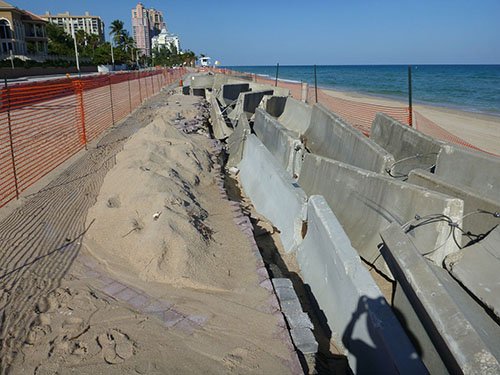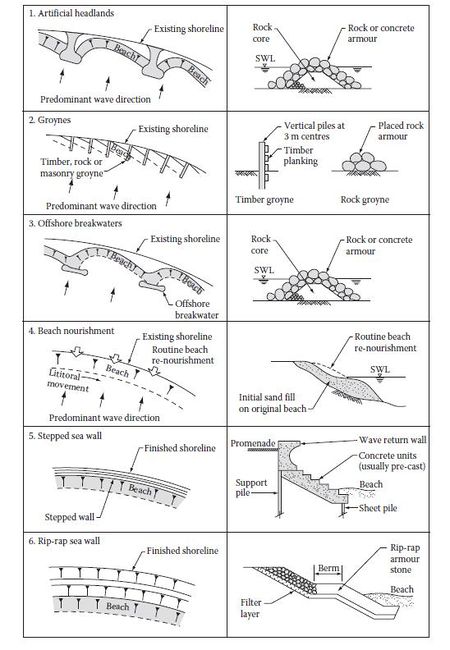All about Shore Protect Team
Table of ContentsShore Protect Team for BeginnersTop Guidelines Of Shore Protect TeamThe Ultimate Guide To Shore Protect TeamThe 45-Second Trick For Shore Protect TeamNot known Facts About Shore Protect TeamThe Greatest Guide To Shore Protect TeamGet This Report on Shore Protect Team
Decrease in home worth: As the area tourist is impacted by disintegration, so then is the economic situation. Buyers are much less likely to look for a coastline house that could be damaged at any type of moment by the impending flooding and erosion emergency situation. In turn, property value can go down immensely and impact the whole area.Whether a beach is simply small and jampacked or has to shut totally for the safety of the community and close-by buildings, this substantially affects tourist. Subsequently, regional economic climates are impacted (https://www.moptu.com/shrprtcttm). Risk of injury: The raised danger of flooding and architectural failings creates a boosted threat of injury to neighboring visitors and neighborhood members

is home to more than 84,240 miles of coastline with 41% of it subjected to the open sea. Coastal engineers supervise of securing the coast against changes by minimizing the detrimental impacts of both natural and synthetic events. Shoreline stablizing is directly relevant to their job. Waterfront hotels: Since coastline disintegration impacts tourist, it impacts the success of waterside hotels.
The 10-Minute Rule for Shore Protect Team
This eventually brings about closures and deserted beachfront residential or commercial properties. Coastal business organizations: No travelers implies no service. For those services accommodating locals, their building goes to threat of damage from erosion and flooding. Coastal state parks: State parks that exist along coastlines are at danger of damages. Not just to the manufactured structures and residential properties on website, yet additionally to the all-natural ecological communities that exist within.
Soft stablizing is a better option for the setting and more lasting overall. Tough stablizing makes use of man-made frameworks as protection to control disintegration. Generally, these structures are installed at ideal angles or alongside stop sand motion and minimize the force of waves. The majority of forms of tough stablizing like seawalls and sheet steel are not excellent for coastline stablizing.
The Basic Principles Of Shore Protect Team
There's also insufficient proof of their effectiveness depending on the kind of shoreline and neighborhood problems. Tough stabilization strategies have a tendency to be harder to install and do not match the all-natural visual, sticking out like a sore thumb and harming regional communities in many situations. Beach nourishment is the process of adding shed sand and sediment back to coastlines after disintegration has occurred.
TrapBags help in the process of coastline nourishment by securing natural communities and permitting plants to grow. They're: Ecologically friendly: You can make use of indigenous soil both to border and to load the TrapBags.

Getting The Shore Protect Team To Work
They can additionally be mounted without any hefty equipment. Inexpensive: TrapBags are perfect for both small and huge areas of shoreline.
Incorporated with a high building cost, this has actually resulted in raising use various other soft design seaside management choices such as beach replenishment. Seawalls are built from various materials, the majority of frequently enhanced concrete, boulders, steel, or gabions. Other possible construction materials consist of plastic, timber, light weight aluminum, fiberglass composite, and biodegradable sandbags made of jute and coir. The ideal seawall design depends on location-specific facets, consisting of bordering disintegration processes. There are three main types of seawalls: vertical, rounded, stepped, and piles (see table below). A record published by the United Nations Setting Program (UNEP) recommends that the tidal wave of 26 December 2004 caused less damages in the locations where natural obstacles were existing, such as mangroves, reef or coastal greenery.
All-natural obstacles, such as reef and mangrove forests, stop the spread of tidal waves and the circulation of coastal waters and minimized the flooding and rise of water. A cost-benefit method is an efficient means to determine whether a seawall is suitable and whether the advantages are worth the expense.
Indicators on Shore Protect Team You Should Know
A seawall is a static attribute which can contravene the vibrant nature of the coast and restrain the exchange of sediment in between land and sea. The table below sums up some positive and negative impacts of seawalls which can be utilized when contrasting their efficiency with other seaside administration alternatives, such as coastline nutrition. [] Advantages and negative aspects of seawalls according to Short (1999) Benefits Drawbacks Long term remedy in contrast to soft beach nutrition.

This can trigger coastlines to dissipate, making them useless for coastline goers. Typically, seawalls can be an effective means to regulate seaside erosion, however only if they are built well and out of products that can endure the force of continuous wave energy.
The Buzz on Shore Protect Team
Combined with a high building price, this has brought about enhancing use other soft design seaside management choices such as beach replenishment. Seawalls are constructed from numerous products, many typically reinforced concrete, boulders, steel, or gabions. Other possible building and construction products include vinyl, wood, light weight aluminum, fiberglass composite, and naturally degradable sandbags made of hemp and coir. The proper seawall design depends on location-specific facets, consisting of bordering erosion procedures. There are 3 primary kinds of seawalls: upright, rounded, stepped, and mounds (see table listed below).
All-natural obstacles, such as reef and mangrove woodlands, prevent the spread of tidal waves and the flow of seaside waters and minimized the flood and rise of water. A cost-benefit approach is a reliable way to determine whether a seawall is ideal and whether the advantages are worth the expense.
9 Simple Techniques For Shore Protect Team
A seawall is a static function which can clash with the dynamic nature of the shore and impede the exchange of debris between land and sea. The table below sums up some positive and negative impacts of seawalls which can be made use of when contrasting their efficiency with various other coastal administration choices, such as beach nourishment. [] Benefits and downsides of seawalls according to Short (1999) Benefits Downsides Long-term solution in comparison to soft coastline sustenance. dock and bulkhead construction.

This can cause beaches to dissipate, rendering them worthless for coastline goers. Generally, seawalls can be a successful way to regulate seaside disintegration, but only if they are created well and out of materials that can endure the force of ongoing wave power.